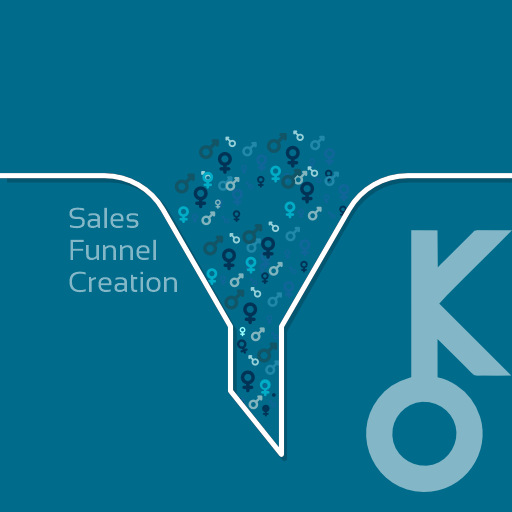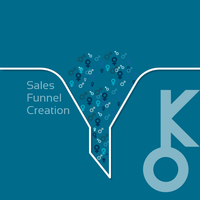Sales Funnel Strategies: Email Marketing

Email marketing is a crucial component of any successful sales funnel. It allows businesses to connect with their audience, provide valuable content and offers, and ultimately convert leads into paying customers. In this overview, we will discuss some effective sales funnel strategies specifically tailored towards email marketing.
1. Building an Engaging Email List:
The first step in implementing a successful email marketing strategy is building an engaging and responsive email list. This involves collecting email addresses from interested prospects through various methods such as website opt-in forms, content upgrades, or lead generation campaigns. The key here is to offer something of value to your audience in exchange for their email address (e.g., free e-book, exclusive tips). Quality over quantity is essential when it comes to building your list.
2. Segmenting Your Audience:
Segmentation plays a critical role in optimizing your sales funnel strategy as it allows you to tailor your emails and offers to specific segments of your audience. By dividing your email list into different groups based on specific characteristics or behaviors (e.g., demographics, purchase history), you can send targeted messages that resonate with each segment's unique needs and interests. This personalization increases engagement and conversion rates.
3. Creating Compelling Content:
Once you have built your email list and segmented your audience effectively, the next step is creating compelling content for your subscribers. Your emails should be educational, informative, entertaining, or a combination of these elements depending on the preferences of each segment you are targeting. Providing valuable content establishes credibility and trust with your subscribers while keeping them engaged throughout the customer journey.
4. Nurturing Leads through Automation:
Automation tools play a vital role in making the most out of your sales funnel strategy for email marketing by enabling efficient lead nurturing processes at scale. Automated series of emails called "drip campaigns" can be set up to deliver relevant messages at predefined intervals. These campaigns can include welcome emails, onboarding sequences, educational content, and promotional offers based on the recipient's stage in the sales funnel. Automation helps build relationships with your prospects and guide them through different stages of the buying process.
5. Optimizing Your Conversion Funnel:
To maximize conversions within your email marketing sales funnel, it's essential to continually analyze and optimize its effectiveness. This involves tracking key metrics such as open rates, click-through rates (CTR), conversion rates, and revenue per email campaign. By monitoring these metrics closely, you can identify areas for improvement and make data-driven decisions to enhance the customer journey at every touchpoint.
6. Retaining Customers through Ongoing Communication:
An effective sales funnel strategy doesn't end when a prospect becomes a customer. It is equally important to focus on retaining customers by maintaining ongoing communication through email marketing efforts. Providing valuable post-purchase content such as tutorials, tips, or exclusive offers will help strengthen customer loyalty and encourage repeat purchases.
In conclusion, implementing these sales funnel strategies in your email marketing efforts will enable you to effectively nurture leads and convert them into loyal customers. Building engaging email lists, segmenting your audience appropriately, creating compelling content tailored to each segment's needs and behaviors are crucial steps towards optimizing conversion rates in your business.
Remember that continuous optimization based on data analysis is key to ensure an effective sales funnel strategy for long-term success in generating revenue from your email list.
Sponsored
Sponsored
Sponsored
Explore More:

The Impact of AI and Machine Learning
As technology continues to advance at a rapid pace, businesses are constantly looking...

Future of Sales Funnels
The future of sales funnels is an exciting and promising concept for businesses...

Lessons Learned from Failed Funnels
In the realm of sales funnel creation, case studies serve as valuable resources...

Successful Sales Funnel Examples
In sales funnel creation, case studies play a crucial role in demonstrating the...

Case Studies in Sales Funnel Creation
In the world of sales and marketing, case studies play a crucial role...

Sales Funnel Recovery Strategies
Sales funnels are a critical component of any successful sales and marketing strategy....

Improving Funnel Efficiency
A sales funnel is a crucial component of any business's marketing strategy. It...

Identifying Funnel Leaks
A sales funnel is a systematic approach to guiding potential customers through a...

Sales Funnel Troubleshooting
Sales funnel troubleshooting is the process of identifying and resolving issues or bottlenecks...

Sales Funnel Tools and Software: Landing Page Builders
Sales funnels are essential in driving conversions and increasing revenue for businesses. To...

Sales Funnel Tools and Software: Email Marketing Tools
Sales funnel tools and software refer to the various technologies and platforms available...

Sales Funnel Tools and Software: CRM Software
Sales funnel tools are software programs or applications designed to help businesses track...

Sales Funnel Tools and Software
A sales funnel is a framework used by businesses to guide potential customers...

Measuring Sales Funnel Performance: Analytics and Reporting
Measuring sales funnel performance analytics and reporting is a crucial aspect of any...

Measuring Sales Funnel Performance: Sales Funnel Metrics
Measuring the performance of your sales funnel is crucial for understanding the effectiveness...

Measuring Sales Funnel Performance: Key Performance Indicators (KPIs)
Measuring the performance of a sales funnel is crucial for any business aiming...